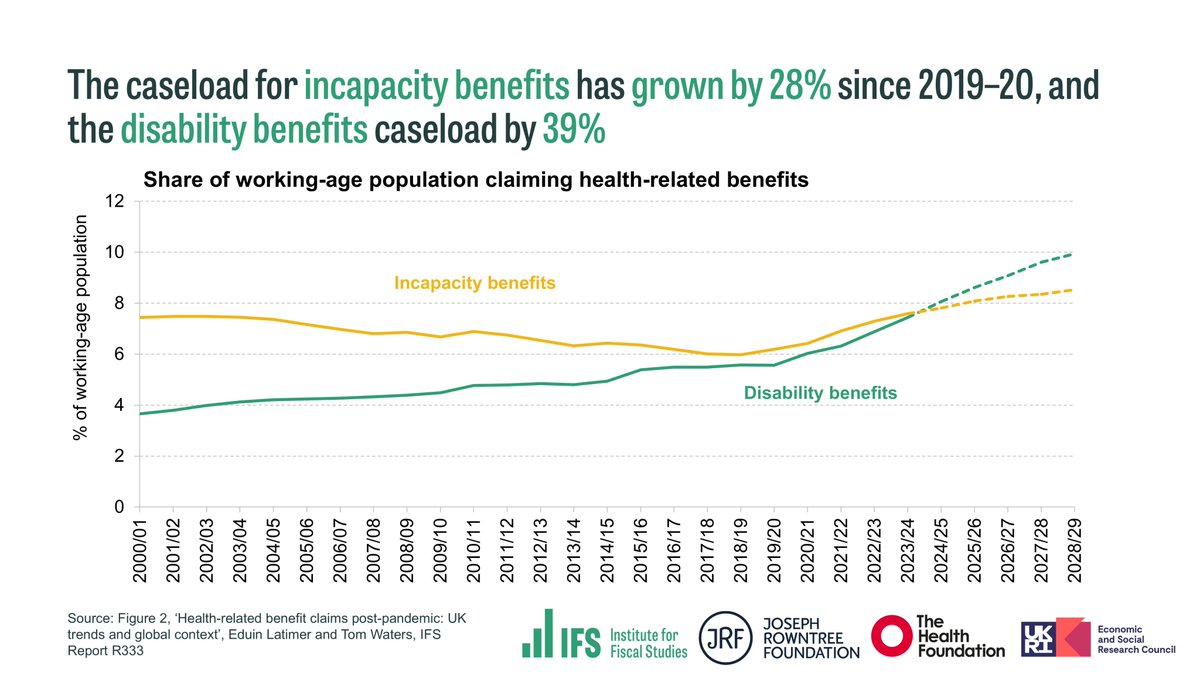NEW: Inequalities by family background emerge early and persist as children progress through the education system.
@ckfarquharson, @Sandra_McNally & Imran Tahir’s findings from our IFS Deaton Review chapter on education inequalities, funded by @NuffieldFound, in a thread:
[1/12]
@ckfarquharson, @Sandra_McNally & Imran Tahir’s findings from our IFS Deaton Review chapter on education inequalities, funded by @NuffieldFound, in a thread:
[1/12]

The disadvantage gap at GCSE between children eligible for free schools meals and other children has barely changed over the past 20 years, despite decades of policy attention.
[2/12]
[2/12]

There is a direct link between family household income and children’s educational attainment.
Only 25% of children from the poorest tenth of households got five good GCSEs including English and maths, compared to 71% of pupils from the richest tenth.
[3/12]
Only 25% of children from the poorest tenth of households got five good GCSEs including English and maths, compared to 71% of pupils from the richest tenth.
[3/12]

Differences in educational attainment translate into large differences in qualifications in adulthood.
Over 70% of private school students have graduated university by age 26, compared to just 17% of state school students from the most deprived fifth of families.
[4/12]
Over 70% of private school students have graduated university by age 26, compared to just 17% of state school students from the most deprived fifth of families.
[4/12]

Those with lower levels of education see very slow earnings growth over their working lives.
The median 40-year-old graduate earns twice as much as someone qualified to GCSE level or below.
[5/12]
The median 40-year-old graduate earns twice as much as someone qualified to GCSE level or below.
[5/12]
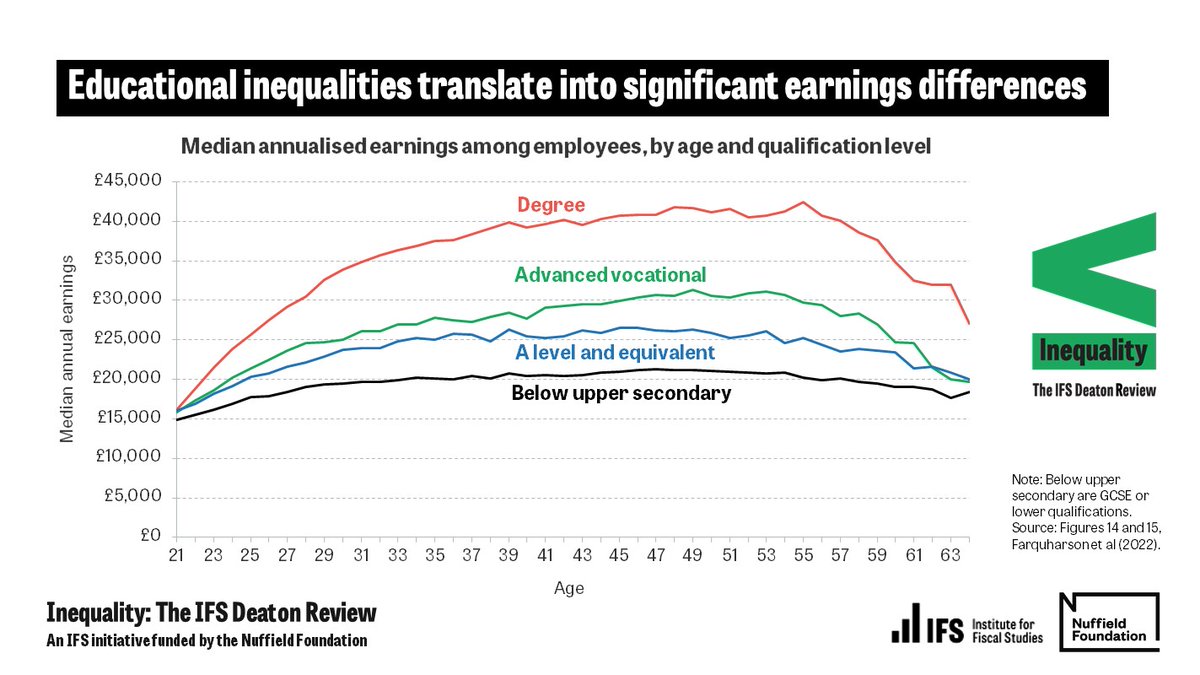
High earnings overwhelmingly go to those with the highest qualifications.
For those with at most GCSEs, the most common annual salary is the same for 25-30-year-olds as it is for 45-50-year-olds.
[6/12]
For those with at most GCSEs, the most common annual salary is the same for 25-30-year-olds as it is for 45-50-year-olds.
[6/12]
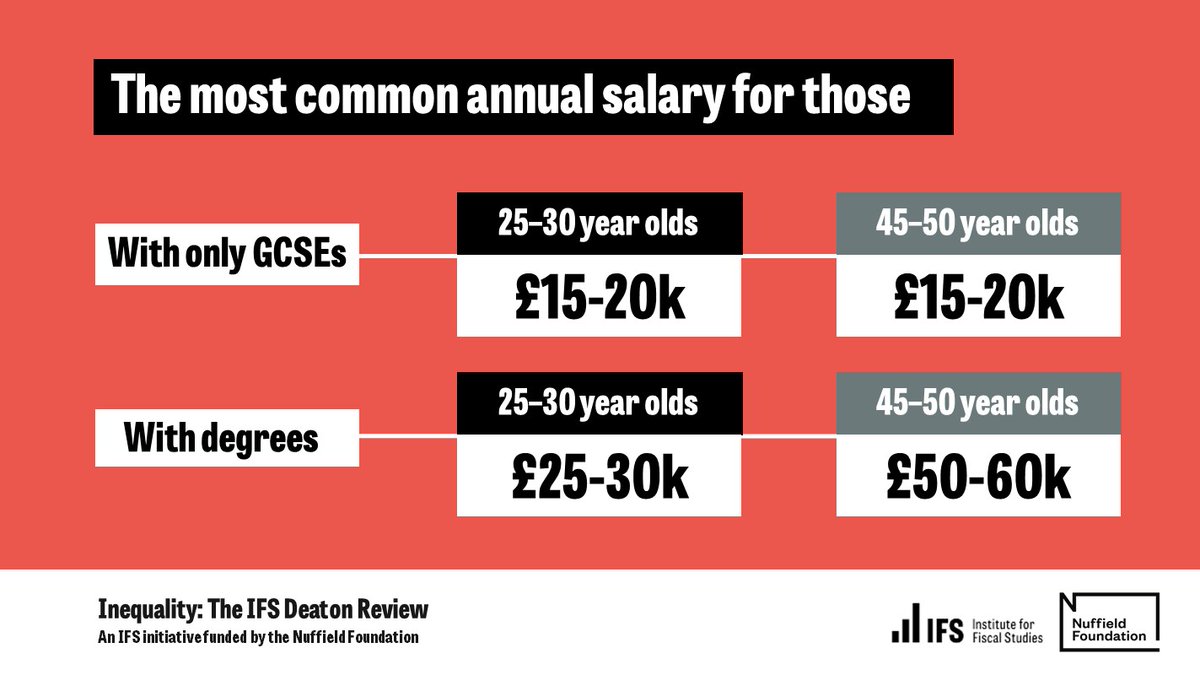
Education spending in England has become less progressive over time.
In 2010, primary school pupils in the most disadvantaged fifth of schools got around 35% more funding than the most affluent fifth of schools.
By 2019, this premium had fallen to just 23%.
[7/12]
In 2010, primary school pupils in the most disadvantaged fifth of schools got around 35% more funding than the most affluent fifth of schools.
By 2019, this premium had fallen to just 23%.
[7/12]
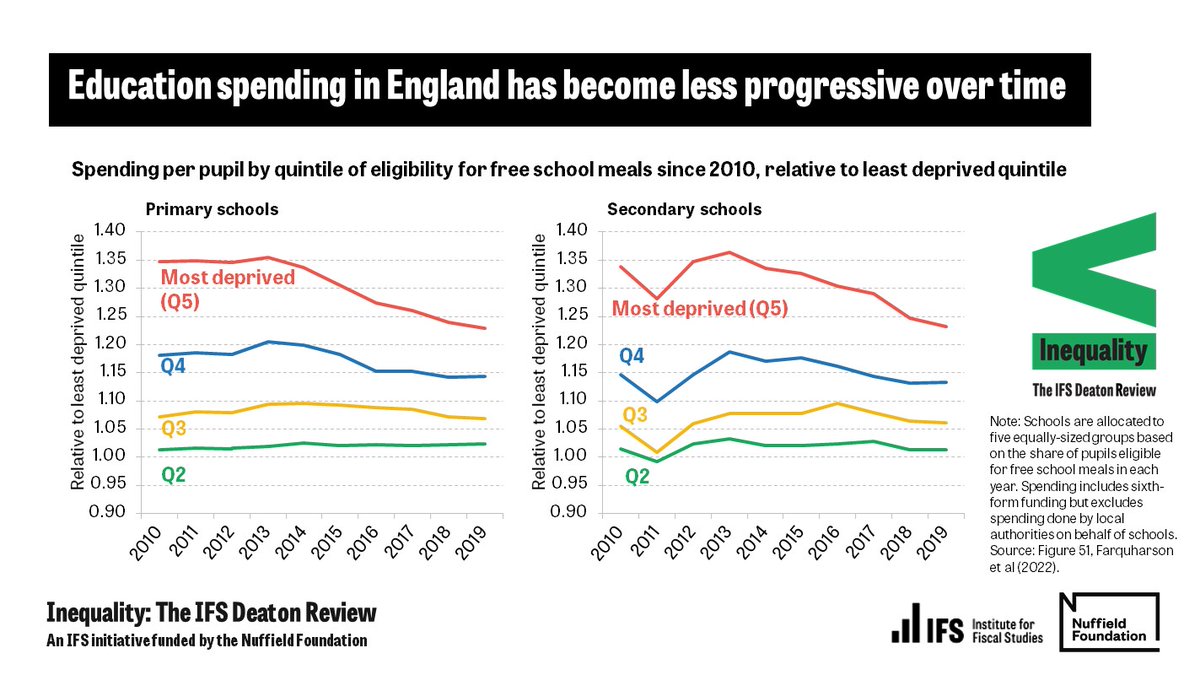
The gap between private school and state school spending per pupil has more than doubled in the past decade.
By 2019–20, resources per pupil in the private sector were twice as high as in the state sector.
[8/12]
By 2019–20, resources per pupil in the private sector were twice as high as in the state sector.
[8/12]
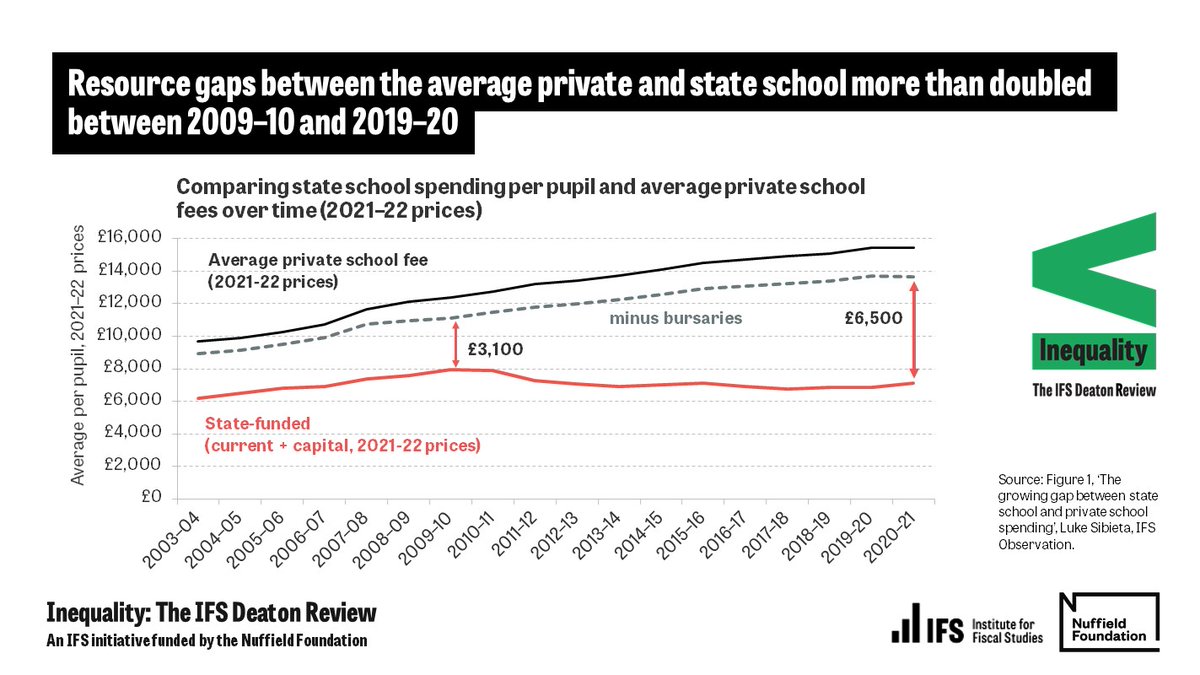
There is a lack of second chances in the UK for those who do not achieve well at age 16.
The removal of public funding from low-level classroom-based courses has made it more difficult for adults with few existing qualifications to access educational opportunities.
[9/12]
The removal of public funding from low-level classroom-based courses has made it more difficult for adults with few existing qualifications to access educational opportunities.
[9/12]

Unlike in many other countries, very few UK adults progress to advanced vocational qualifications.
Adults in the UK are almost half as likely as German adults, and a quarter as likely as American adults, to start an advanced vocational qualification.
[10/12]
Adults in the UK are almost half as likely as German adults, and a quarter as likely as American adults, to start an advanced vocational qualification.
[10/12]
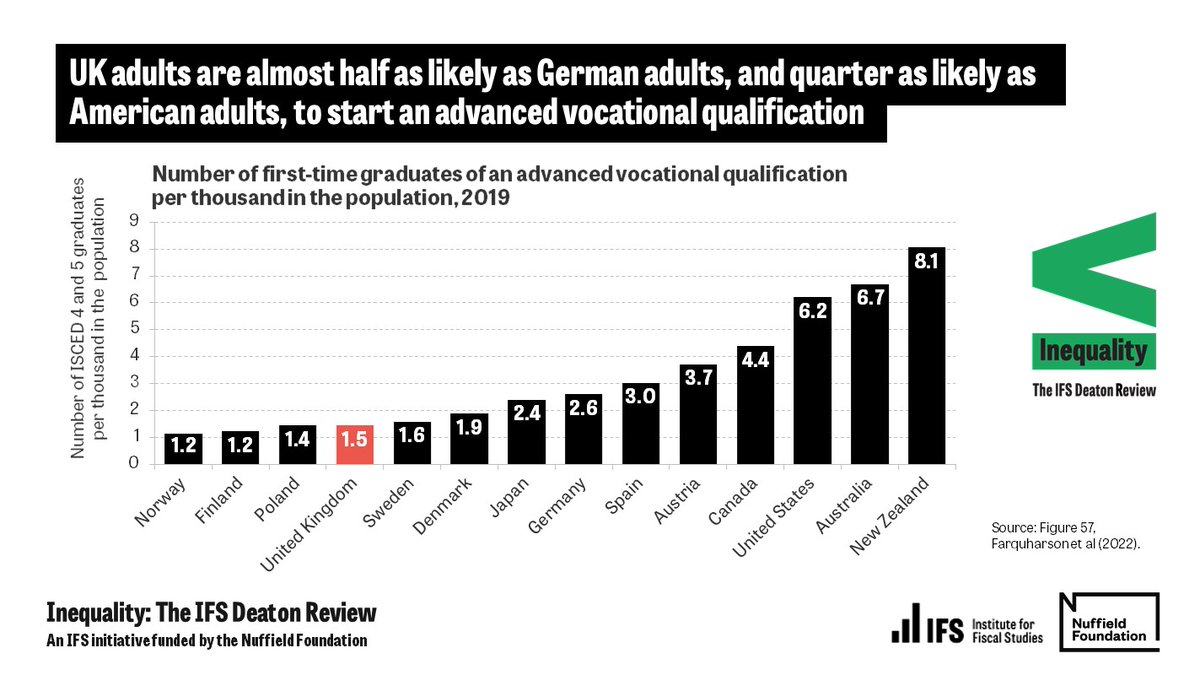
Spending on adult education in 2019–20 was nearly two-thirds lower in real terms than in 2003–04, and about 50% lower than in 2009–10.
These large funding cuts in recent years have hampered access to adult education.
[11/12]
These large funding cuts in recent years have hampered access to adult education.
[11/12]

“If the government is to meet its mission to have 90% of pupils attaining the expected level at the end of primary school, it needs to prioritise the education system and especially the disadvantaged pupils within it.”
Read the full chapter>
ifs.org.uk/inequality/cha…
[12/12]
Read the full chapter>
ifs.org.uk/inequality/cha…
[12/12]
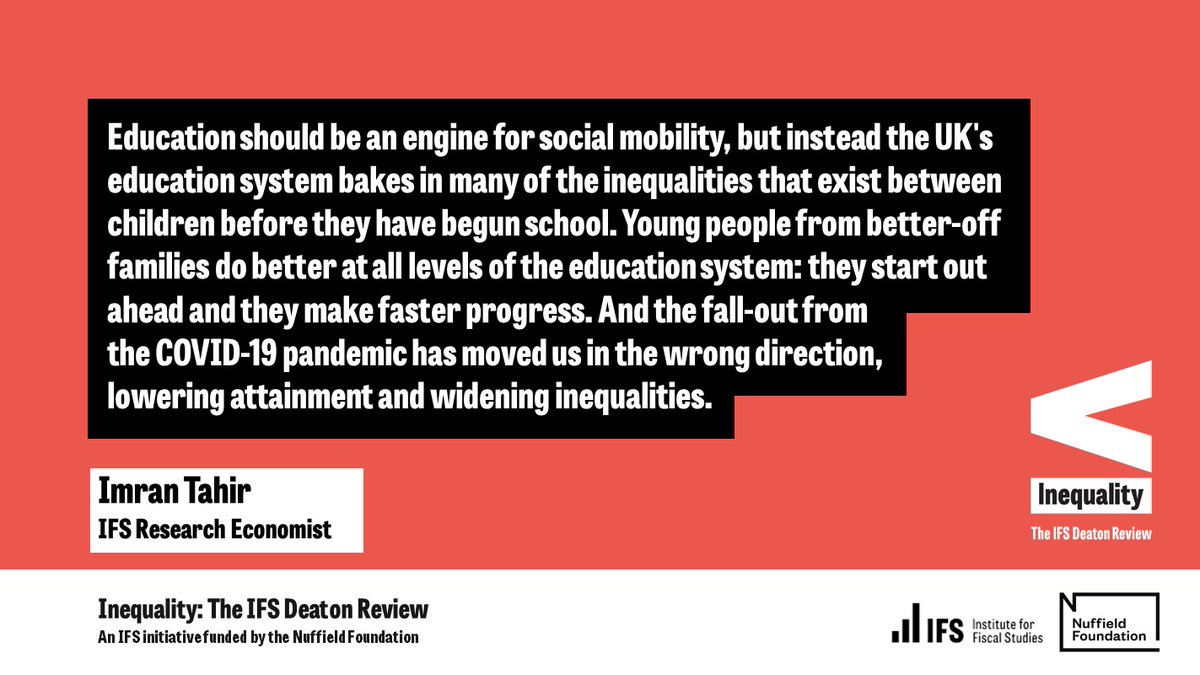
Watch back our event with @PJTheEconomist and @ckfarquharson presenting the findings from this chapter and commentaries from Simon Field and Diane Reay>
https://twitter.com/TheIFS/status/1559464228750331904
• • •
Missing some Tweet in this thread? You can try to
force a refresh











